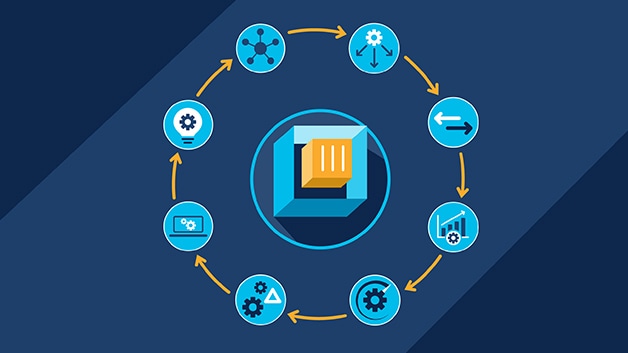What is Container Orchestration?
Container orchestration helps IT professionals and programmers maximize their applications’ performance. It helps them ensure that multiple containers can work together to handle more tasks at the same time than any one container could manage on its own. But how does container orchestration work, exactly? What are its advantages, and how do you go about implementing it? This article will provide answers to all of your queries and more.
What is Container Orchestration?
Container orchestration automates the scheduling, deployment, networking, scaling, health monitoring, and management of containers. Containers are complete applications; each one packaging the necessary application code, libraries, dependencies, and system tools to run on a variety of platforms and infrastructure. Containers in some form have been around since the late 1970s, but the tools used to create, manage, and secure them have dramatically changed.
We have come a long way from the days of building single-tier monolithic applications that only worked on a single platform. Today, developers have choices between microservices, containers, and virtual machines, all with options for different cloud providers or hybrid deployments including on-premises.

How does Container Orchestration work?
When you use a container orchestration tool, such as Kubernetes, you will describe the configuration of an application using either a YAML or JSON file. The configuration file tells the configuration management tool where to find the container images, how to establish a network, and where to store logs.
When deploying a new container, the container management tool automatically schedules the deployment to a cluster and finds the right host, taking into account any defined requirements or restrictions. The orchestration tool then manages the container’s lifecycle based on the specifications that were determined in the compose file.
You can use Kubernetes patterns to manage the configuration, lifecycle, and scale of container-based applications and services. These repeatable patterns are the tools needed by a Kubernetes developer to build complete systems.
Container orchestration can be used in any environment that runs containers, including on-premise servers and public cloud or private cloud environments.
What are the benefits?
It’s probably clear that the chief benefit of container orchestration is automation – and not only because it reduces greatly the effort and complexity of managing a large containerized application estate. By automating operations, orchestration supports an agile or DevOps approach that allows teams to develop and deploy in rapid, iterative cycles and release new features and capabilities faster.
In addition, an orchestration tool’s intelligence can enhance or extend many of the inherent benefits of containerization. For example, automated host selection and resource allocation, based on declarative configuration, maximizes efficient use of computing resources; automated health monitoring and relocation of containers maximize availability.
Why do we need it?
When you have a limited number of containers, it is possible to perform those management tasks manually or with simple scripting. However, as the number of containers increases, it becomes harder and harder to do so. This is where container orchestration tools will come into play.
You can use other tools such as Kafka to let the containers communicate with each other. You can find out more about using Docker, Kubernetes, and Kafka with MongoDB in this blog post.
Container orchestration enables system administrators and DevOps engineers to maintain large server farms with thousands of containers. Without container orchestration, everything would need to be done manually and would quickly become unmanageable.

Introduction to container orchestration tools
There are many orchestration tools available for containers; some of the most common are described here.
- Docker Compose: Takes a file defining a multi-container application (including dependencies) and deploys the described application by creating the required containers. It is mainly aimed at development, testing, and staging environments.
- Docker Swarm: Produces a single, virtual Docker host by clustering multiple Docker hosts together. It presents the same Docker API, allowing it to integrate with any tool that works with a single Docker host.
- Kubernetes: Created by Google and one of the most feature-rich and widely used orchestration frameworks; its key features include: Automated deployment and replication of containers.
– Online scale-in or scale-out of container clusters.
– Load balancing over groups of containers.
– Rolling upgrades of application containers.
– Resilience, with the automated rescheduling of failed containers.
– Controlled exposure of network ports to systems outside of the cluster. - Apache Mesos: Apache Mesos, another open-source platform for container orchestration, was originally developed at the University of California, Berkeley, and is now widely used at large organizations. Apache Mesos’ lightweight architecture allows scaling for many thousands of nodes, and its API is compatible with numerous programming languages, including Java, C++, and Python. Apache Mesos by itself is only a cluster manager, so various frameworks have been built on top of it to provide more complete container orchestration, the most popular of these being Marathon.
Conclusion
Container orchestrators have become an industry standard. They help automate container deployment, installation, provisioning, and management. Although container orchestration poses some security risks, the proper safeguards can allow organizations to reap the benefits of containerization, and save time while ensuring consistency and scaling automatically.